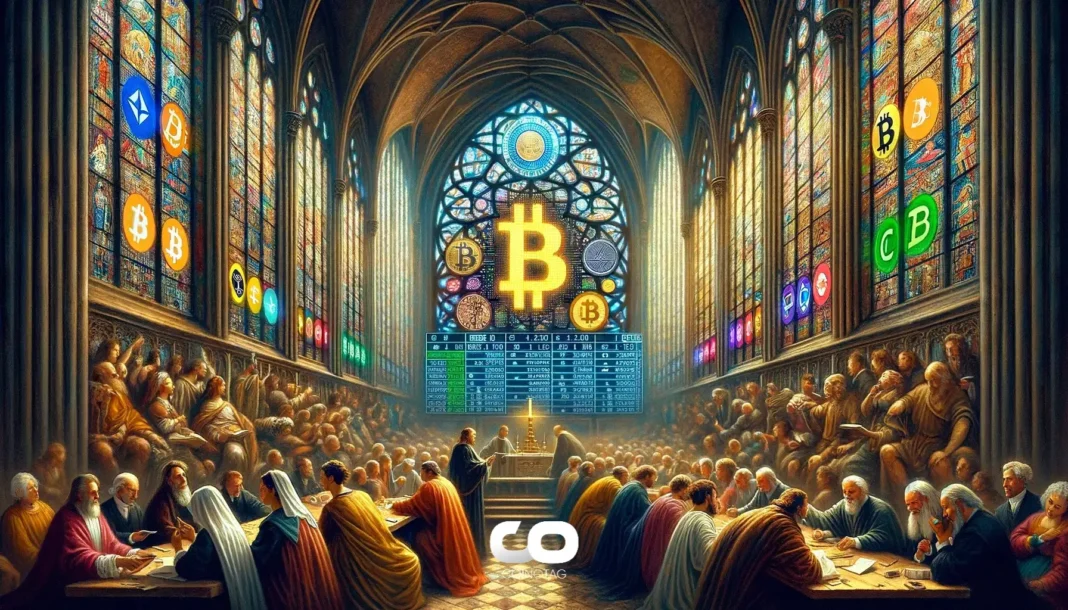-
Chainlink, JPMorgan’s Kinexys, and Ondo Finance have successfully completed a pioneering crosschain Delivery versus Payment (DvP) settlement test, marking a key advancement in bridging traditional finance with decentralized finance (DeFi).
-
This collaboration demonstrated the simultaneous and secure exchange of tokenized assets and payments across a permissioned institutional network and a public blockchain testnet, showcasing a practical solution for future digital asset settlements.
-
According to COINOTAG, “This breakthrough highlights the critical role of interoperability protocols like Chainlink’s CCIP in enabling atomic swaps between disparate financial ecosystems.”
Chainlink, JPMorgan, and Ondo Finance achieve a landmark crosschain DvP settlement, advancing secure, efficient tokenized asset trading across traditional and decentralized finance networks.
Groundbreaking Crosschain DvP Settlement: Bridging Traditional Finance and DeFi
The recent test involving Chainlink, JPMorgan’s Kinexys platform, and Ondo Finance represents a significant milestone in the evolution of digital asset settlements. By successfully executing a crosschain Delivery versus Payment (DvP) transaction, the collaboration proved that tokenized assets on a public blockchain can be exchanged atomically with payments on a permissioned, institutional-grade network. This development addresses a longstanding challenge in the financial industry—enabling secure, instantaneous settlement across heterogeneous blockchain environments.
Understanding the Importance of Crosschain DvP in Digital Asset Markets
Delivery versus Payment is a cornerstone of traditional financial market settlements, mitigating counterparty risk by ensuring that asset delivery and payment occur simultaneously. Translating this mechanism into the blockchain realm, especially across different networks, is vital for the maturation of tokenized asset markets. Crosschain DvP reduces settlement risk, enhances operational efficiency by automating processes, and unlocks liquidity by enabling seamless asset exchanges between diverse blockchain ecosystems. This capability is essential for institutional adoption of tokenized securities, stablecoins, and other digital financial instruments.
JPMorgan’s Kinexys: Integrating Institutional Infrastructure with Blockchain Innovation
JPMorgan’s Kinexys platform exemplifies the bank’s commitment to leveraging distributed ledger technology for wholesale payments. By participating in this test, Kinexys demonstrated how permissioned blockchain networks can securely interact with public DeFi environments. This integration is a critical step toward enabling regulated financial institutions to engage with the expanding digital asset ecosystem without compromising compliance or operational integrity. Kinexys’ role underscores the necessity of interoperability solutions that bridge the gap between traditional finance’s controlled environments and the open, decentralized networks where many digital assets reside.
Ondo Finance’s Role in Advancing Tokenized Asset Ecosystems
Ondo Finance specializes in tokenizing traditional financial assets and bringing them onto blockchain platforms. Serving as the public network participant in the test, Ondo Chain’s testnet provided the environment for tokenized assets to be exchanged. Ondo’s expertise in structuring tokenized financial products complements JPMorgan’s institutional infrastructure, illustrating how DeFi protocols can collaborate with legacy finance to create innovative, compliant financial solutions. This partnership highlights the growing convergence of DeFi and traditional asset management.
Chainlink’s Interoperability Technology: The Backbone of Crosschain Settlement
Chainlink’s Cross-Chain Interoperability Protocol (CCIP) and Runtime Environment (CRE) were pivotal in enabling the atomic execution of the DvP transaction. CCIP facilitates secure communication and token transfers between distinct blockchain networks, while CRE allows complex off-chain computations to be verified and executed reliably. Acting as middleware, Chainlink ensured that asset delivery on one chain and payment on another occurred simultaneously or not at all, eliminating settlement risk. This technological foundation is critical for building scalable, secure crosschain financial applications and is increasingly recognized as essential infrastructure for the future of decentralized finance.
Implications and Benefits for the Financial Industry
The successful crosschain DvP test unlocks multiple advantages for both traditional and digital finance sectors:
- Enhanced Efficiency: Automates and accelerates settlement processes, reducing delays and operational costs.
- Risk Mitigation: Atomic settlement eliminates counterparty risk inherent in asynchronous transactions.
- Liquidity Expansion: Facilitates seamless asset trading across networks, deepening market liquidity.
- Innovation Enablement: Supports the creation of novel financial instruments involving tokenized assets.
- Capital Optimization: Faster settlements free capital previously locked in lengthy clearing cycles.
- TradFi-DeFi Integration: Provides a blueprint for secure interoperability between regulated institutions and decentralized platforms.
Challenges and Future Outlook for Crosschain DvP Adoption
Despite this technological breakthrough, several challenges remain before crosschain DvP becomes mainstream:
- Regulatory Uncertainty: Jurisdictional differences and evolving regulations around tokenized assets require clarity.
- Scalability Concerns: Systems must handle high transaction volumes typical of global financial markets.
- Security Requirements: Ensuring robust protections across heterogeneous networks is paramount.
- Standardization Needs: Industry-wide protocols and standards are essential for seamless interoperability.
- Legacy System Integration: Harmonizing new blockchain solutions with existing financial infrastructure remains complex.
Nonetheless, the collaboration between Chainlink, JPMorgan, and Ondo Finance demonstrates that these obstacles are surmountable, signaling a promising future for crosschain settlements and tokenized asset markets.
Conclusion
The successful crosschain DvP settlement test marks a transformative moment in the evolution of digital finance. By bridging JPMorgan’s permissioned Kinexys network with Ondo Finance’s public blockchain environment through Chainlink’s interoperability technology, this collaboration has validated a practical, secure method for atomic asset and payment exchanges across diverse networks. This advancement not only mitigates settlement risk and enhances efficiency but also lays the groundwork for broader institutional adoption of tokenized assets. As regulatory frameworks mature and technical challenges are addressed, crosschain DvP settlement is poised to become a foundational element in the future global financial ecosystem.







